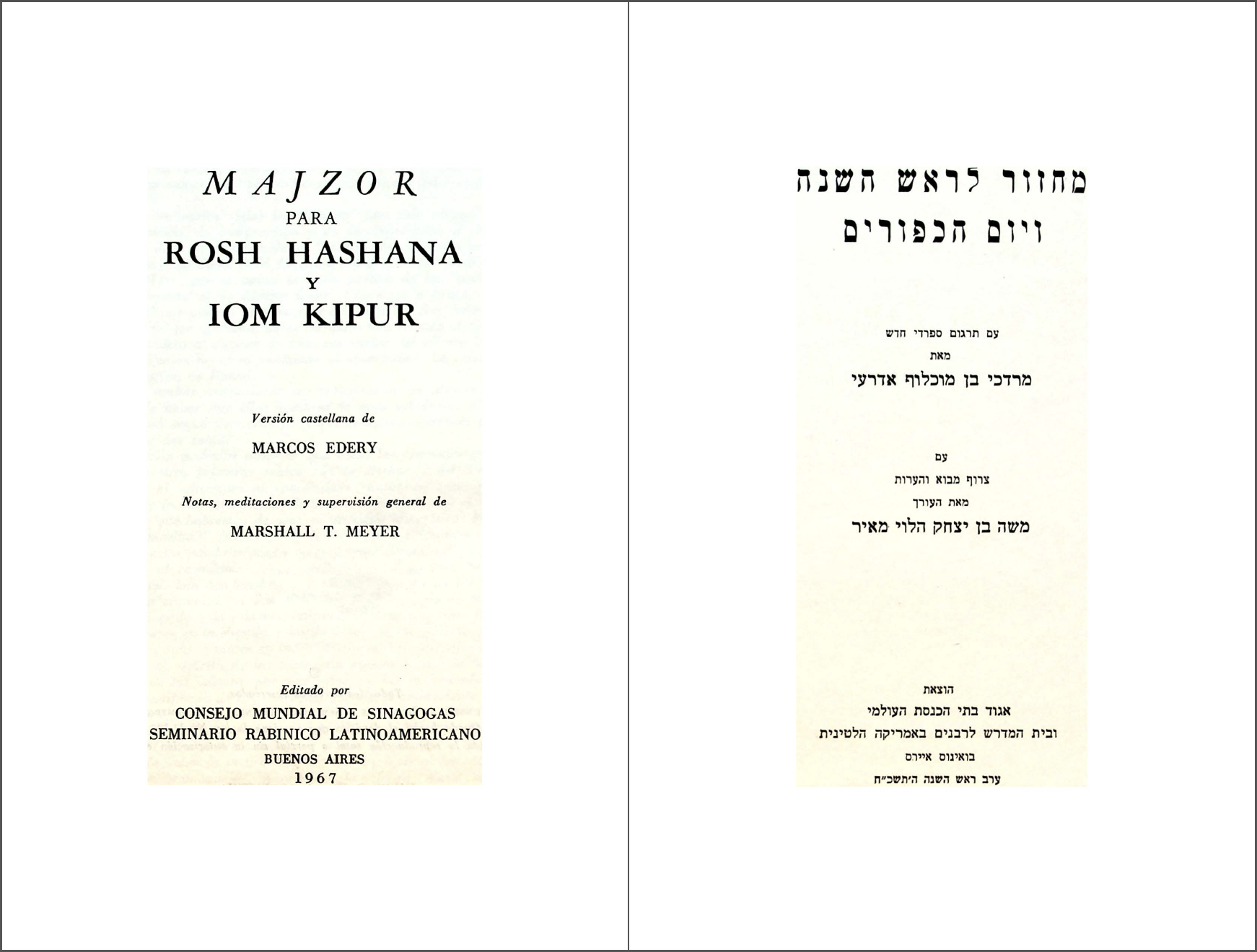מחזור לראש השנה ויום כיפור Majzor para Rosh haShanah y Yom Kipur (1967) is a bilingual Hebrew-Spanish prayerbook for the Yamim Noraïm compiled and translated by Rabbi Marcos Edery z”l, and published by the World Council of [Conservative/Masorti] Synagogues under the supervision of Rabbi Marshall T. Meyer (1930-1993). Rabbi Reubén Nisembom (1938-2023), then a student at the Seminario Rabínico Latinoamericano, proofread the maḥzor. Besides the liturgy (in the Ashkenazi nusaḥ), the prayerbook is prefaced by Seliḥot and includes essays concerning prayer by 20th century scholars in Spanish translation, such as Rabbi Abraham Joshua Heschel and Martin Buber.

This work is in the Public Domain in the United States by treaty according the Uruguay Round Agreements Act (1994), 50 years having passed since its publication in Argentina (the general term of copyright for works published between 1957 and 1997).
Source (Translation) Translation (English)
Source (Translation) Translation (English)
Buenos Aires, Argentina
Mayo 15 de 1967.
Iom Ha-atsmaut, 5 de lyar 5727
Buenos Aires, Argentina
15 May 1967
Yom ha-Atsmaüt, 5 lyar 5727




